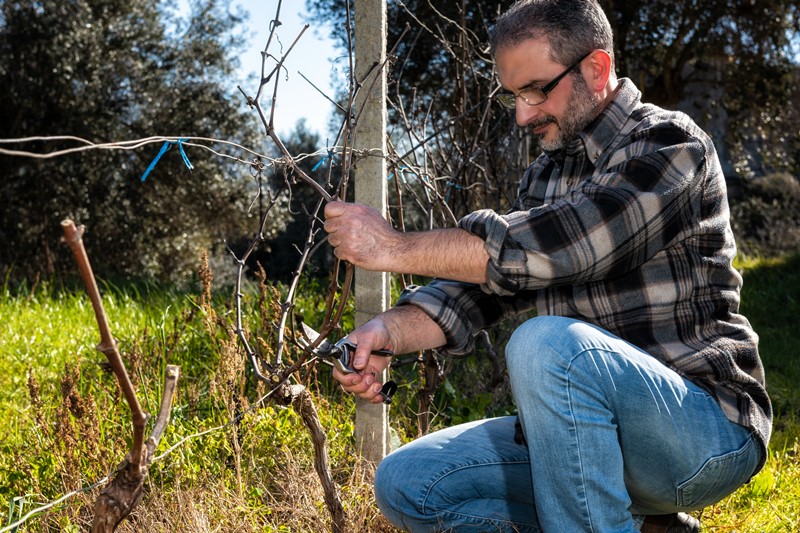
Vine pruning is a critical practice in viticulture, undertaken to control the natural growth of the vine and enhance the yield and quality of the grapes. This horticultural technique is as much an art as it is a science, requiring a deep understanding of the vine's life cycle, environmental conditions, and the desired characteristics of the wine to be produced.
The vine is a perennial plant, characterized by a distinct annual cycle in temperate regions. This cycle begins with bud break in early spring and culminates with leaf fall in autumn. During this time, the vine undergoes various stages of growth and dormancy, each of which plays a crucial role in the development of the grapes.
Despite respecting the natural biological cycle of the plant, cultivated vines require human intervention to perfect their development. This is where pruning, among other vineyard practices, becomes essential. Left unmanaged, the vine, a climbing plant with potentially limitless growth, would prioritize vegetative expansion over fruit production. This unchecked growth not only hampers the quality of the grapes but also complicates vineyard management.
The Purpose and Timing of Pruning
Pruning serves multiple purposes: it shapes the vine, controls its growth, and improves the exposure of the fruit to sunlight and air, which are critical for ripening and disease prevention. The most intensive pruning occurs in winter, a period when the vine is in a state of dormancy. This is the best time to prune as the plant's metabolic processes are slowed, reducing the risk of sap loss and allowing the plant to heal before the next growing season.
In addition to winter pruning, which is the primary pruning session, there are other types of pruning throughout the year, such as spring "green pruning." These sessions are crucial for ensuring that the vine produces healthy, mature grapes of high quality, which are essential for making good wine.
Types of Pruning
- Formation Pruning: Formation pruning occurs during the early years of a vine's life, typically within the first three to four years. This stage is crucial as it establishes the vine's structure and growth pattern. The pruning techniques used depend on the training system chosen for the vineyard, which varies by climate and grape variety. For instance, a vine might be trained to grow along a trellis or in a more bush-like form, depending on the intended wine style and local growing conditions.
- Fruiting Pruning: Once the vine reaches maturity, fruiting pruning helps maintain its shape and controls its growth. This involves selecting and cutting back the canes and buds each year to ensure that the grapes receive adequate sunlight and air circulation. Proper exposure to these elements is vital for the grapes' development, as it influences their sugar levels, acidity, and resistance to pests and diseases.
- Winter Pruning or Dry Pruning: Conducted after leaf fall and before the new buds break, winter pruning is a critical task. This period of dormancy is when the plant's sap flow is at its lowest, minimizing the risk of damage from cutting. The objective is to remove the previous season's growth and trim back older wood, which rejuvenates the vine and prepares it for the next growing season. Care must be taken not to prune during extremely cold weather, as this can make the wood brittle and more susceptible to cracking, which can lead to infections like esca and eutypa dieback.
- Green Pruning: Also known as "summer pruning," this process complements winter pruning by managing the vine's canopy during the growing season. It involves removing excess shoots, leaves, and clusters that may not ripen properly. This practice helps balance the vine's vigor, ensuring that the remaining grapes receive sufficient nutrients and sunlight, which enhances their quality.
The Impact of Pruning on Wine Quality
Pruning is not merely a maintenance task; it directly impacts the quality of the wine produced. By controlling the vine's yield, pruning helps concentrate the flavors in the remaining grapes, leading to more intense and balanced wines. It also helps manage the vine's exposure to sunlight, which is crucial for the development of sugars and phenolic compounds in the grapes. These compounds are essential for the wine's color, flavor, and structure.
Furthermore, by improving air circulation within the vine canopy, pruning reduces the risk of fungal diseases, which can affect the grapes' health and, consequently, the wine's quality. This aspect of vineyard management is particularly important in regions with humid climates, where disease pressure is higher.
In the world of viticulture, pruning is a fundamental practice that requires skill, experience, and knowledge. It is a labor-intensive process that reflects the vineyard's commitment to quality and sustainability. By shaping the vine and guiding its growth, viticulturists can produce grapes that truly express the character of their terroir, resulting in wines of exceptional quality. Whether it's the meticulous cuts of winter pruning or the careful thinning of summer green pruning, each step in this process is a testament to the art of winegrowing.
Founded in 2007, Vinetur® is a registered trademark of VGSC S.L. with a long history in the wine industry.
VGSC, S.L. with VAT number B70255591 is a spanish company legally registered in the Commercial Register of the city of Santiago de Compostela, with registration number: Bulletin 181, Reference 356049 in Volume 13, Page 107, Section 6, Sheet 45028, Entry 2.
Email: [email protected]
Headquarters and offices located in Vilagarcia de Arousa, Spain.